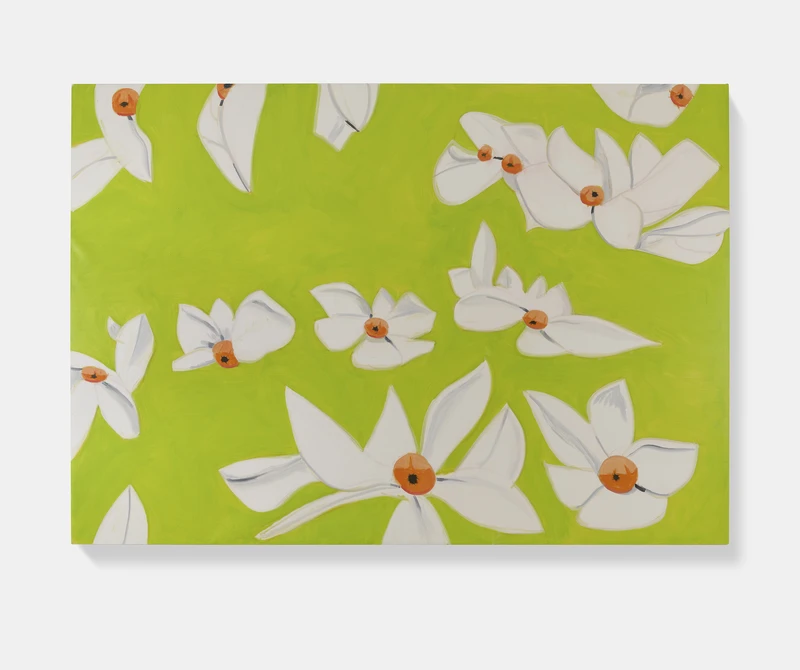Alex Katz: Spring
12 Sep-26 Oct 2024
PV 12 Sep 2024, 6-8pm


Timothy Taylor is pleased to present Alex Katz: Spring, an exhibition featuring vibrant new paintings dedicated to the landscape. On view from 12 September through 26 October in London, the presentation will include six large-scale paintings and three studies belonging to the same series featured in Alex Katz: Seasons which only recently closed at the Museum of Modern Art in New York. Completed in 2023, these evocative compositions of flowers and trees are based on landscapes the artist observed in New York City and Lincolnville, Maine, where he has summered since 1954.
For the past three years, Katz has largely shifted his focus to depictions of blossoms and foliage, highlighting the way light shapes our experience of the natural world. The lush, sun-dappled trees found near his downtown New York studio, where he has worked since 1968, and the crisp, bright climates of coastal Maine lend themselves to his minimalist style of abstraction that distils forms to their essential elements. As he has explained, he seeks to capture “the sensation of seeing,” and his vigorous, airy approach to mark-making brilliantly reflects the ephemerality of his subjects. Katz works from life, photographs, and memory, creating small sketches before moving on to larger scales. He intuitively builds up his compositions with marks of wet-on-wet brushwork until he generates what he describes as a “surface energy” that translates the exact feeling he had when first viewing his subject.
Katz began painting from life and en plein air while studying at the Skowhegan School for Painting and Sculpture in Maine in 1949, setting him on a trajectory he continues to pursue more than seven decades later. Across his paintings of both figures and the natural world, the artist has always prioritised the quality of light, viewing colour as a vehicle for conveying illumination rather than an end in itself. He recently described the way he approaches the changing light: “To get involved in painting a sunset, you have fifteen minutes to make a sketch. And then what you do is make a sketch from what you remember of this moment. Then you go out and make another sketch, and then you paint a memory; what you think it looked like.” The resulting compositions inhabit the liminal space between reality, emotion, and memory.
In the works on view in Spring, Katz explores the vital season of growth with glimpses through trees and ethereal arrangements of blooms on monochrome grounds. Cloud-like passages of cyan, chartreuse, vermillion, and mauve are broken through by fragments of limbs and daubs that mimic the curl of new leaves. His cropped views nevertheless suggest expansiveness, registering at once as ambiguous yet universal. In the monumental Spring 16, lilting white flowers with voluptuous orange centres drift on a lime-green ground. As with many of his canvases, there is no horizon, which creates a sense of total immersion. Spring 11 features islands of electric blue fractured by white, with wisps of black branches and almost pointillist suggestions of pear-green leaves; the resulting composition ambiguously situates the viewer looking up to the sky or down into a reflection in water. In these paintings, the natural world reaches outward and upward, reflecting a kind of vast, unmediated ode to living.